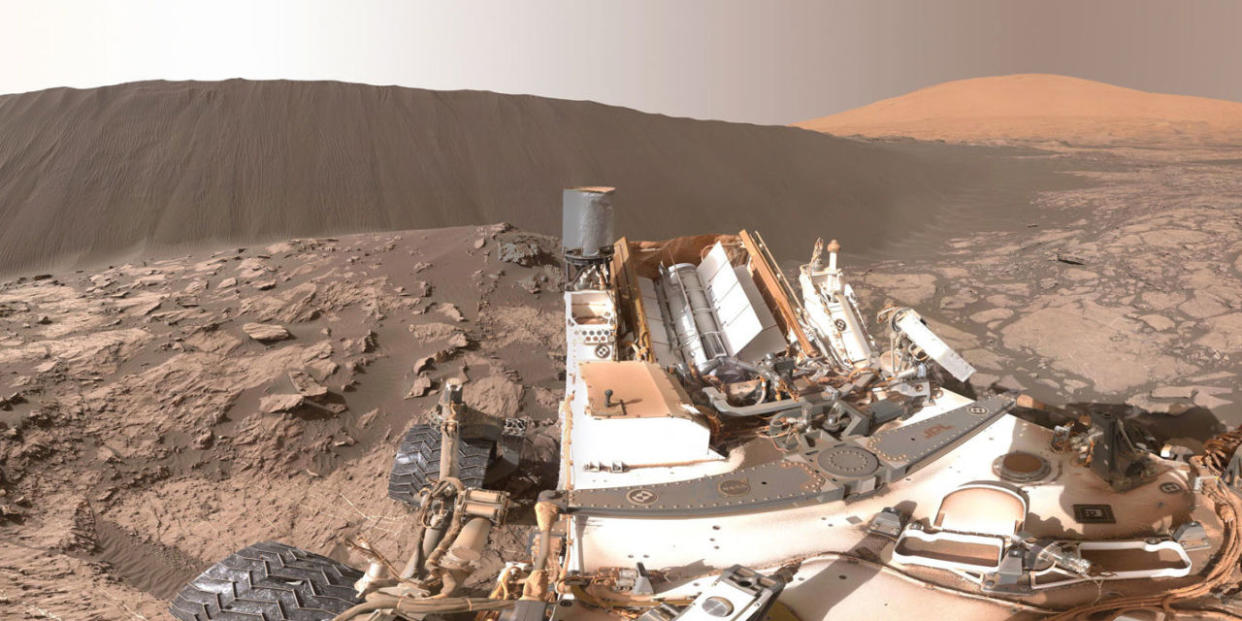"Levitating" Sands Could Be the Key to Landscape Formation on Mars

Despite it being the best planet for future colonization efforts, Mars is a very different world than Earth. Temperatures average about −55 degrees Celsius (−67° F) on the Red Planet, and can range from about −153 degrees C (−243° F) at the poles to 20 degrees C (68° F) near the equator at high noon. Even more alien, the atmosphere on Mars is a little less than one percent the thickness of Earth's atmosphere, which results in some unique chemical processes. For example, water ice will sublimate rather than melt on the surface, changing directly from a solid into vapor despite the frigid temperatures.
New research suggests the unique conditions on Mars can produce a "levitating" effect on martian sands and dust, a factor that must be accounted for when studying dune formation and other geological processes on the Red Planet. The study, published this morning in Nature Communications, builds off previous research that suggests liquid water flows underground on Mars today, as evidenced by dark streaks of briny water that appear seasonally in martian dunes. When small amounts of this water reach the surface and are exposed to the atmosphere, they sublimate immediately into a gas, or perhaps exist very briefly as liquid water before boiling into vapor. This boiling process can levitate sands and carry them across the surface, especially down a slope.
"It is possible that water 'trapped' underneath sediment cover could be liquid on Mars in small amounts," Jan Raack, lead author and a research fellow at The Open University, told Popular Mechanics in an email. "Overlaying sediment would protect water to sublimate, and when it would come into contact with the thin atmosphere, it would boil and cause the effect of levitation and saltation we have observed in our experiments."
The exact formation processes of martian hills and dunes is still somewhat of a mystery for planetary geologists. The sands of Mars do not behave like the sands of the Sahara. The reduced gravity on Mars, only 3.7 m/s² compared to 9.8 m/s² on Earth, is partially responsible for the unique geologic processes, but scientists haven't been able to explain the entire picture just by accounting for the weaker gravity. Raack believes the levitating process he reproduced in the lab could be a missing piece to the puzzle.
"If liquid water (maybe groundwater or rapid ice melt or liquid brines) comes into contact with a relatively warm martian surface (around 5° C), then the effect of levitation will be possible which enhances the amount of transported sediment down a slope massively," says Raack.
The levitating sands on Mars may seem like a minor addition, just a new variable in the geologic models that simulate dune formation, but understanding the geology on Mars is vital to any human exploration efforts. Where is the water on Mars, and how could we access it? What challenges do engineers face when designing the foundation of a structure on Mars? Do the shifting sands of the Red Planet hide microbes beneath, sustaining off the thick briny water underground?
If Raack's levitating sands model is correct, it could help scientists tackle these fundamental questions about our neighbor planet.
You Might Also Like


